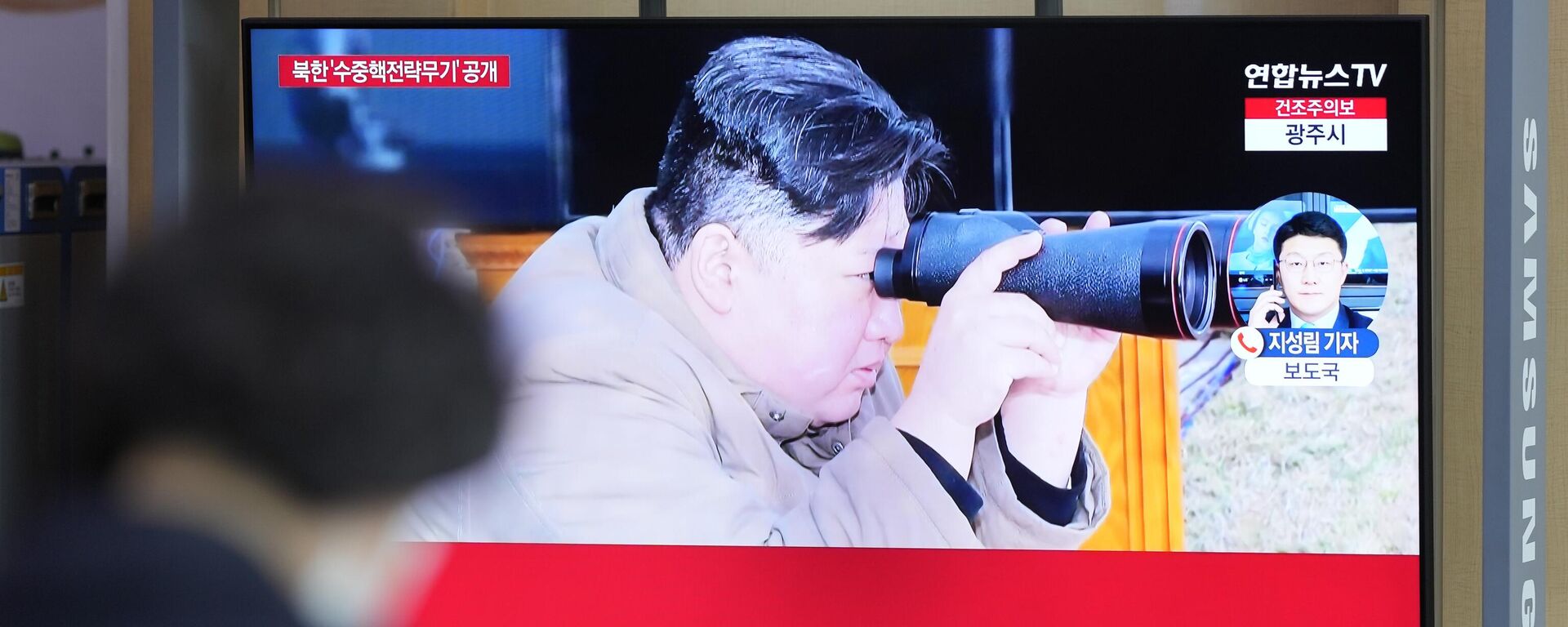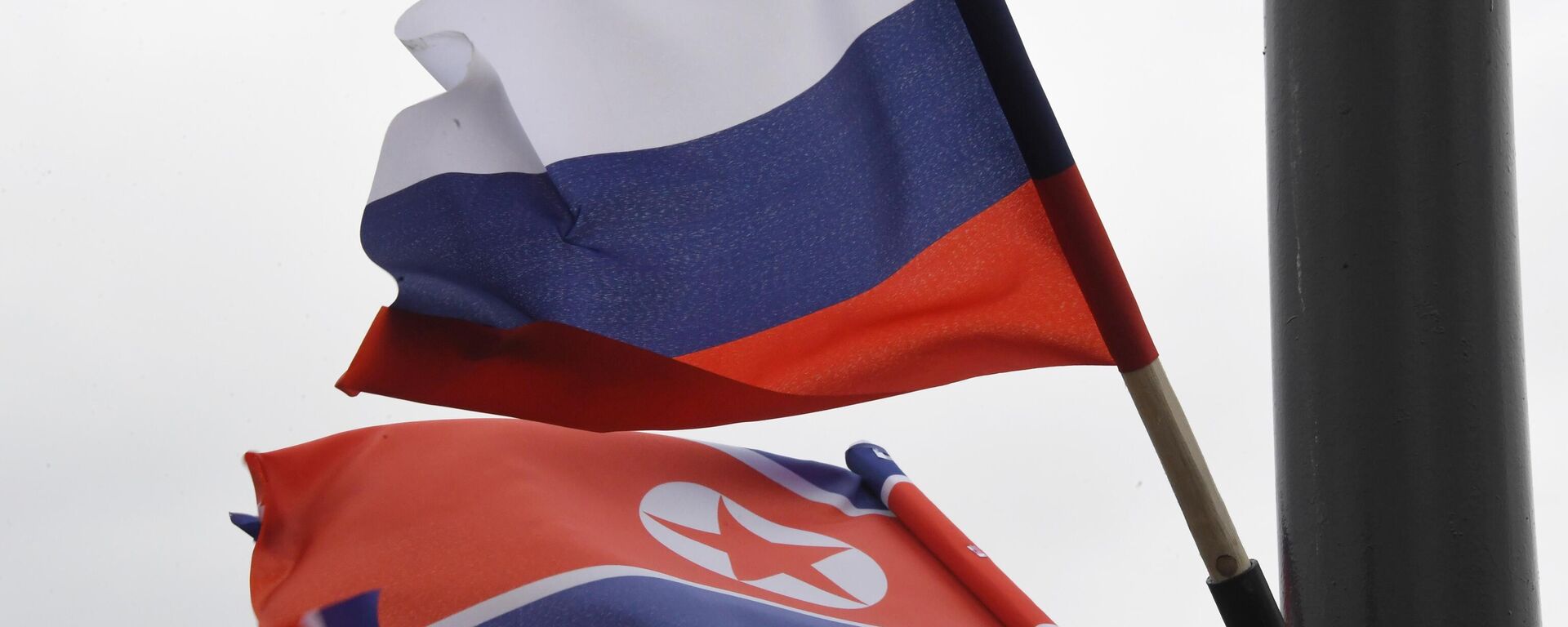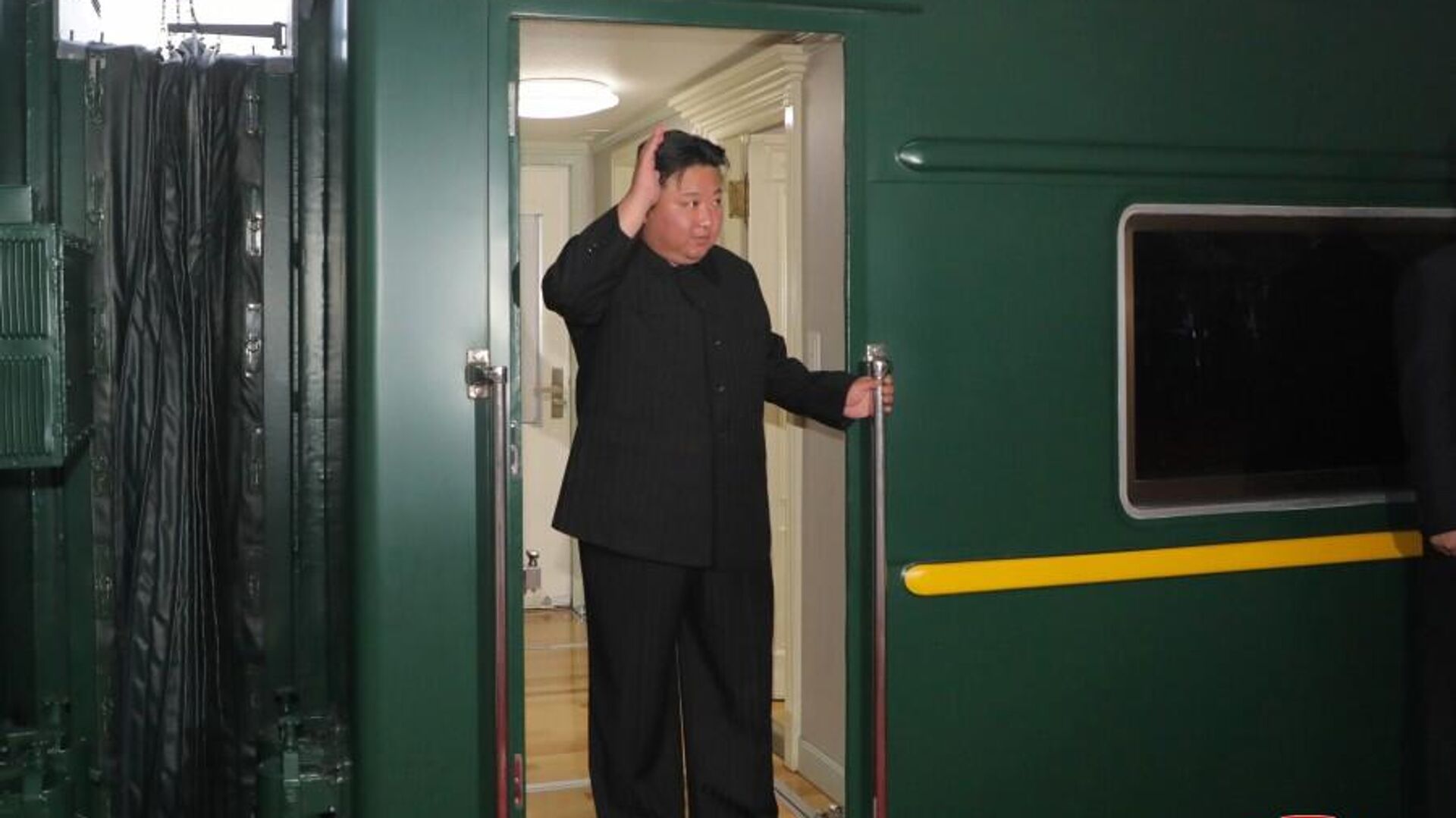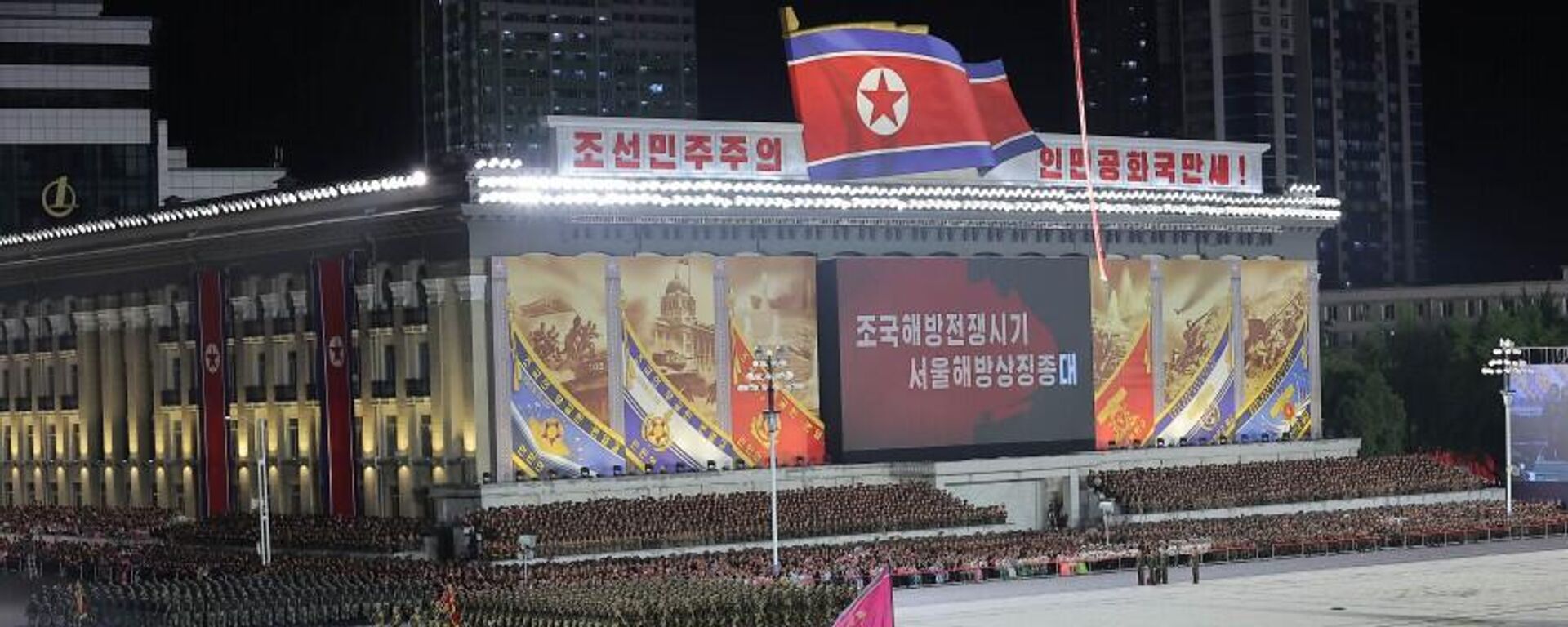https://sputnikglobe.com/20230912/why-does-kim-jong-un-travel-by-train-1113303258.html
Why Does Kim Jong Un Travel By Train?
Why Does Kim Jong Un Travel By Train?
Sputnik International
Stepping beyond the borders of North Korea for the first time in almost four years after the pandemic, Kim Jong Un is believed to have once again opted for his... 12.09.2023, Sputnik International
2023-09-12T12:55+0000
2023-09-12T12:55+0000
2023-09-18T13:37+0000
world
donald trump
kim jong-un
china
jinping
beijing
sputnik
ilyushin
north korea
https://cdn1.img.sputnikglobe.com/img/07e7/09/0c/1113310870_0:46:900:552_1920x0_80_0_0_52ef6f08466bd006b9d52a2fdb5b8f63.jpg
Kim Jong Un, the Supreme Leader of the Democratic People's Republic of Korea (DPRK), is known for his distinctive approach to travel. Unlike many world leaders who rely on airplanes for international journeys, Kim Jong Un often opts for train travel.In essence, the tradition to use railroads for international trips among North Korean leaders is deeply entrenched in the country's history, reflecting strategic, ideological, and practical considerations. Understanding this tradition provides valuable insights into North Korea's ruling elite's leadership dynamics and strategic mindset.Sputnik delves into why Kim Jong Un prefers trains, exploring the historical, security, and geopolitical factors influencing his transportation decisions.Why Does the North Korean Leader Prefer Train Travel?The tradition of train travel holds deep roots in the history of North Korean leadership, going back to the early days of the DPRK.The train's primary distinction lies in its unequivocal emphasis on security. South Korean media outlets report that North Korea maintains a fleet of 90 specialized carriages, employing a meticulously organized system of three interconnected trains when a leader embarks on a journey. This ensemble encompasses a lead train responsible for inspecting rail tracks, a primary train housing the leader and their closest confidantes, and a third carriage positioned at the rear, catering to the remaining retinue members.Historically, North Korean leaders have also utilized train travel to maintain a strong connection with the country's populace. The distinctive appearance of the leader's train is instantly recognizable to the North Korean people, symbolizing the leader's accessibility and direct engagement with the nation.Moreover, train travel aligns with the ideals of self-sufficiency and independence central to North Korean ideology. By relying on their rail network, the leadership aims to demonstrate a degree of autonomy from external influences, particularly in transportation.Furthermore, train journeys often incorporate stops at various towns and cities. These impromptu visits allow the leader to interact with local officials, inspect infrastructure projects, and receive updates on regional developments. This direct engagement fosters a sense of unity and solidarity between the leadership and the citizenry.The country's landscape could be a factor. North Korea's terrain is characterized by rugged mountains and limited flat expanses, making constructing and maintaining extensive road networks challenging. On the other hand, trains can navigate these terrains more effectively, providing reliable transportation across the Korean Peninsula.Does Kim Jong Un Travel by Airplane?In sharp contrast, Kim Jong Un is believed to have developed a penchant for air travel during his formative years at a Swiss boarding school, the International School of Berne. Since taking the reins in 2011, he has selectively opted for flying, notably demonstrated by his journey to Singapore in 2018 for his inaugural meeting with Trump.In 2018, a momentous occasion unfolded when the North Korean leader flew to the northeastern Chinese city of Dalian for crucial talks with Chinese President Xi Jinping. This event held immense significance, as it denoted the initial instance of a North Korean leader embarking on a public international journey by air since Kim Il Sung's momentous flight to the Soviet Union in 1986.The official aircraft of Kim Jong Un is a retrofitted version of the Soviet-produced IL-62, referred to as "Chammae-1" in North Korea, in homage to the nation's emblematic goshawk. South Korean media accounts estimate its passenger capacity at approximately 200 individuals, with a formidable range extending to 9,200 kilometers (5,700 miles). Nonetheless, there are claims that the aircraft has never been dispatched on a mission covering such extensive distances.What is Kim Jong Un's Train Like?Kim Jong Un's train is a testament to both practicality and luxury. This precisely designed mode of travel ensures that the Supreme Leader experiences the utmost comfort and convenience during his journeys.Private Suites and Bedrooms: The train has lavish private suites and bedrooms for Kim Jong Un and his entourage. These compartments are designed with the highest standards of luxury, featuring opulent fittings, premium bedding, and ample space for relaxation.According to visuals released by North Korean state media, a selection of carriages boasts extravagant elements, from pink leather chairs to big-screen televisions and windows adorned with ivory-toned curtains.Conference Rooms: The train includes well-appointed conference rooms, allowing Kim Jong Un to conduct official meetings and discussions while in transit. These spaces are equipped with state-of-the-art communication technology to facilitate seamless communication. The leader's train, encompassing 21 carriages, has elegant all-white conference rooms, dining cars, and comfy sleeping quarters.Gourmet Dining Facilities: Kim Jong Un's train boasts top-tier dining facilities, with skilled chefs who prepare diverse gourmet dishes to suit the Supreme Leader's palate. The menu is customized to his preferences, offering a local and international cuisine selection.The narrative of Kim Jong Il's extended three-week sojourn through Russia in the summer of 2001, in the company of Konstantin Pulikovsky, a former military figure and Russian official, is chronicled in Pulikovsky's book Orient Express.According to Pulikovsky's recollections, the train spares no expense in providing exquisite passengers with gastronomic treats featuring an array of abundant delicacies, including the indulgence of lobster.Among the selection of wines in Kim Jong Il's traveling wine library were notable French vintages from Bordeaux and Burgundy.Entertainment and Leisure Spaces: The train has entertainment facilities to ensure a pleasant journey. These may include lounges, libraries, and recreational areas where Kim Jong Un and his delegation can unwind.Advanced Security Measures: Given the importance of Kim Jong Un's safety, the train is equipped with advanced security systems. This includes secure communication channels, surveillance equipment, and protocols to safeguard against potential threats.North Korea’s State television affirms that the train has satellite phone connections, enabling Kim to stay updated on developments and issue directives as needed.Citing intelligence assessments, a 2009 article from a South Korean media outlet conveyed that the train comprises up to 90 rail cars. Moreover, it was indicated that each car is substantially fortified with armor.According to Georgy Toloraya, a Russian diplomat who journeyed with Kim in 2001, he reported that Russian technicians had uncovered armored sheets beneath the two primary rail cars the North Korean leader utilized for his lodgings and official engagements.Ahn pointed out that the train is capable of attaining speeds of up to 80 kilometers per hour (50 miles per hour) on China's railway network, a notable contrast to the maximum speed of about 45 kilometers per hour (28 miles per hour) achievable on North Korea's tracks.Access to Support Staff: A team of skilled support staff, including security personnel, chefs, and administrative assistants, accompany Kim Jong Un on his journeys to ensure that every aspect of his travel experience is well managed.How Many Foreign Trips Has Kim Jong Un Made Since 2011?As Supreme Leader, Kim has surpassed his father's tally of foreign visits. However, each of his international forays is nestled in layers of secrecy and executed under heavy security standards.On March 25 and 28, 2018, he embarked on his inaugural foreign visit. China, the primary political ally and economic supporter of North Korea, was the chosen destination. His voyage to Beijing was undertaken aboard a specially designated train, culminating in a summit with Chinese President Xi Jinping.On April 27, 2018, the world witnessed unprecedented diplomacy as Kim crossed the inter-Korea border, entering the Panmunjom truce village to engage in a summit with South Korean President Moon Jae-in. This monumental event not only marked the first time a North Korean leader had set foot in the South but also represented Kim's inaugural meeting with a South Korean leader, a distinction held by only two other North Korean leaders in history. Against this backdrop, both leaders committed to fortifying relations, terminating military hostilities, and steering toward a future characterized by peace and mutual prosperity.From May 7 to 8, 2018, DPRK’s leader took to the skies aboard his private Ilyushin jet, heading for the northeastern Chinese metropolis of Dalian. He engaged in a high-level summit with Chinese leader Xi Jinping, where discussions centered on further strengthening the enduring bond between the two nations. This diplomatic overture transpired against mounting anticipation for Kim's impending summit with former US President Donald Trump.From June 10 to 12, 2018, Kim Jong Un embarked on an eventful journey, boarding an American-made Boeing 747 operated by Air China for a direct flight from North Korea’s capital to Singapore. This meeting marked the inaugural summit between North Korea and the United States. The climax was a pivotal joint statement, laying the groundwork for a redefined bilateral relationship, providing North Korea with security assurances, and sealing a commitment by the North to halt its nuclear program.On June 19 and 20, 2018, aboard his private Ilyushin jet, he flew to China for a crucial diplomatic engagement. In the heart of Beijing, he held extensive discussions with President Xi, the focal point being the pressing issue of North Korea's denuclearization. Accompanied by his top economic advisors, Kim also seized the opportunity to tour several significant Chinese industrial facilities and a state-of-the-art agricultural research center.On January 7 and 10, 2019, Kim marked his fourth visit to China, opting for a picturesque train journey to Beijing. This visit indicated his anticipation of a second summit with Donald Trump.From February 26 to 28, 2019, Kim undertook a significant diplomatic mission to Hanoi, the vibrant capital of Vietnam. This historic trip honored the second summit between Kim and the then-President of the United States, Donald Trump. Opting for a leisurely three-day train journey originating from Pyongyang, Kim traversed China's expanse before arriving in Vietnam. The ensuing two days were dedicated to intensive discussions. However, the negotiations ultimately faltered, primarily due to a deadlock over the contentious issues of sanctions relief for North Korea and the intricacies of dismantling its nuclear program.On April 24, 2019, the leader of North Korea set forth on a symbolic summit with Russian President Vladimir Putin in Vladivostok. Demonstrating a gesture of significance, Kim ventured on a nearly day-long train journey, crossing the Tumen River border into Russian territory. This summit, their first face-to-face encounter, bore profound implications for the geopolitical tableau.June 30, 2019, stands as a landmark in international diplomacy as Kim took a step across the inter-Korean border for talks with then-President Donald Trump.Scheduled for September 2023, Kim Jong Un is set to return to Vladivostok, choosing the train as his means of travel. This summit with Russian President Vladimir Putin will signify his first venture abroad after the pandemic in more than four years.
https://sputnikglobe.com/20230912/kim-jong-un-leaves-north-korea-for-russia-ahead-of-putin-talks---state-media-1113296085.html
https://sputnikglobe.com/20220210/trump-boasted-about-staying-in-touch-with-kim-jong-un-journo-claims-1092918888.html
https://sputnikglobe.com/20230831/russia-north-korea-maintain-good-relations-contacts-occur-at-various-levels---kremlin-1113013749.html
https://sputnikglobe.com/20230808/north-korea-modernizes-main-battle-tank-production-plant-1112454764.html
china
jinping
beijing
north korea
Sputnik International
feedback@sputniknews.com
+74956456601
MIA „Rosiya Segodnya“
2023
Chimauchem Nwosu
https://cdn1.img.sputnikglobe.com/img/07e7/09/01/1113046371_0:99:1536:1635_100x100_80_0_0_9c5c627283eca931c39fe4852bbb301c.jpg
Chimauchem Nwosu
https://cdn1.img.sputnikglobe.com/img/07e7/09/01/1113046371_0:99:1536:1635_100x100_80_0_0_9c5c627283eca931c39fe4852bbb301c.jpg
News
en_EN
Sputnik International
feedback@sputniknews.com
+74956456601
MIA „Rosiya Segodnya“
Sputnik International
feedback@sputniknews.com
+74956456601
MIA „Rosiya Segodnya“
Chimauchem Nwosu
https://cdn1.img.sputnikglobe.com/img/07e7/09/01/1113046371_0:99:1536:1635_100x100_80_0_0_9c5c627283eca931c39fe4852bbb301c.jpg
kim jong un, supreme leader, democratic people's republic of korea, dprk, train travel, north korean leaders, kim jong il, kim il sung, aerophobia, jet explosion, green and yellow train, security, specialized carriages, lead train, primary train, rear carriage, connection with populace, self-sufficiency, independence, geopolitical landscape, rugged mountains, road networks, korean peninsula, airplane travel, international school of berne, singapore, chammae-1, il-62, luxury train, conference rooms, entertainment spaces, security measures, support staff, foreign trips, china, xi jinping, south korea, moon jae-in, dalian, donald trump, singapore summit, united states, hanoi, vietnam, vladivostok, vladimir putin, pandemic.
kim jong un, supreme leader, democratic people's republic of korea, dprk, train travel, north korean leaders, kim jong il, kim il sung, aerophobia, jet explosion, green and yellow train, security, specialized carriages, lead train, primary train, rear carriage, connection with populace, self-sufficiency, independence, geopolitical landscape, rugged mountains, road networks, korean peninsula, airplane travel, international school of berne, singapore, chammae-1, il-62, luxury train, conference rooms, entertainment spaces, security measures, support staff, foreign trips, china, xi jinping, south korea, moon jae-in, dalian, donald trump, singapore summit, united states, hanoi, vietnam, vladivostok, vladimir putin, pandemic.
Kim Jong Un, the Supreme Leader of the Democratic People's Republic of Korea (DPRK), is known for his distinctive approach to travel. Unlike many world leaders who rely on airplanes for international journeys, Kim Jong Un often opts for train travel.
In essence, the tradition to use railroads for international trips among North Korean leaders is deeply entrenched in the country's history, reflecting strategic, ideological, and practical considerations. Understanding this tradition provides valuable insights into North Korea's ruling elite's leadership dynamics and strategic mindset.
Sputnik delves into why Kim Jong Un prefers trains, exploring the historical, security, and geopolitical factors influencing his transportation decisions.
Why Does the North Korean Leader Prefer Train Travel?
The tradition of train travel holds deep roots in the history of North Korean leadership, going back to the early days of the DPRK.
The train's primary distinction lies in its unequivocal emphasis on security. South Korean media outlets report that North Korea maintains a fleet of 90 specialized carriages, employing a meticulously organized system of three interconnected trains when a leader embarks on a journey. This ensemble encompasses a lead train responsible for inspecting rail tracks, a primary train housing the leader and their closest confidantes, and a third carriage positioned at the rear, catering to the remaining retinue members.
Historically, North Korean leaders have also utilized train travel to maintain a strong connection with the country's populace. The distinctive appearance of the leader's train is instantly recognizable to the North Korean people, symbolizing the leader's accessibility and direct engagement with the nation.

12 September 2023, 00:21 GMT
Moreover, train travel aligns with the ideals of self-sufficiency and independence central to North Korean ideology. By relying on their rail network, the leadership aims to demonstrate a degree of autonomy from external influences, particularly in transportation.
Furthermore, train journeys often incorporate stops at various towns and cities. These impromptu visits allow the leader to interact with local officials, inspect infrastructure projects, and receive updates on regional developments. This direct engagement fosters a sense of unity and solidarity between the leadership and the citizenry.
The country's landscape could be a factor. North Korea's terrain is characterized by rugged mountains and limited flat expanses, making constructing and maintaining extensive road networks challenging. On the other hand, trains can navigate these terrains more effectively, providing reliable transportation across the Korean Peninsula.
Does Kim Jong Un Travel by Airplane?
In sharp contrast, Kim Jong Un is believed to have developed a penchant for air travel during his formative years at a Swiss boarding school, the International School of Berne. Since taking the reins in 2011, he has selectively opted for flying, notably demonstrated by his journey to Singapore in 2018 for his inaugural meeting with Trump.
In 2018, a momentous occasion unfolded when the North Korean leader flew to the northeastern Chinese city of Dalian for crucial talks with Chinese President Xi Jinping. This event held immense significance, as it denoted the initial instance of a North Korean leader embarking on a public international journey by air since Kim Il Sung's momentous flight to the Soviet Union in 1986.

10 February 2022, 18:32 GMT
The official aircraft of Kim Jong Un is a retrofitted version of the Soviet-produced IL-62, referred to as "Chammae-1" in North Korea, in homage to the nation's emblematic goshawk. South Korean media accounts estimate its passenger capacity at approximately 200 individuals, with a formidable range extending to 9,200 kilometers (5,700 miles). Nonetheless, there are claims that the aircraft has never been dispatched on a mission covering such extensive distances.
What is Kim Jong Un's Train Like?
Kim Jong Un's train is a testament to both practicality and luxury. This precisely designed mode of travel ensures that the Supreme Leader experiences the utmost comfort and convenience during his journeys.
Private Suites and Bedrooms: The train has lavish private suites and bedrooms for Kim Jong Un and his entourage. These compartments are designed with the highest standards of luxury, featuring opulent fittings, premium bedding, and ample space for relaxation.
According to visuals released by North Korean state media, a selection of carriages boasts extravagant elements, from pink leather chairs to big-screen televisions and windows adorned with ivory-toned curtains.
"His private train for sure has a luxurious interior and good-quality facilities, but it also can travel safely in China, with pretty good rail tracks there," noted Ahn Byung-min, a senior analyst at South Korea’s government-funded Korea Transport Institute.
Conference Rooms: The train includes well-appointed conference rooms, allowing Kim Jong Un to conduct official meetings and discussions while in transit. These spaces are equipped with state-of-the-art communication technology to facilitate seamless communication. The leader's train, encompassing 21 carriages, has elegant all-white conference rooms, dining cars, and comfy sleeping quarters.
Gourmet Dining Facilities: Kim Jong Un's train boasts top-tier dining facilities, with skilled chefs who prepare diverse gourmet dishes to suit the Supreme Leader's palate. The menu is customized to his preferences, offering a local and international cuisine selection.
The narrative of Kim Jong Il's extended three-week sojourn through Russia in the summer of 2001, in the company of Konstantin Pulikovsky, a former military figure and Russian official, is chronicled in Pulikovsky's book Orient Express.
"You could order any Russian, Chinese, Korean, Japanese, or French dish," Pulikovsky writes.
According to Pulikovsky's recollections, the train spares no expense in providing exquisite passengers with gastronomic treats featuring an array of abundant delicacies, including the indulgence of lobster.
Among the selection of wines in Kim Jong Il's traveling wine library were notable French vintages from Bordeaux and Burgundy.
Entertainment and Leisure Spaces: The train has entertainment facilities to ensure a pleasant journey. These may include lounges, libraries, and recreational areas where Kim Jong Un and his delegation can unwind.
Advanced Security Measures: Given the importance of Kim Jong Un's safety, the train is equipped with advanced security systems. This includes secure communication channels, surveillance equipment, and protocols to safeguard against potential threats.

31 August 2023, 09:50 GMT
North Korea’s State television affirms that the train has satellite phone connections, enabling Kim to stay updated on developments and issue directives as needed.
Citing intelligence assessments, a 2009 article from a South Korean media outlet conveyed that the train comprises up to 90 rail cars. Moreover, it was indicated that each car is substantially fortified with armor.
According to Georgy Toloraya, a Russian diplomat who journeyed with Kim in 2001, he reported that Russian technicians had uncovered armored sheets beneath the two primary rail cars the North Korean leader utilized for his lodgings and official engagements.
Ahn pointed out that the train is capable of attaining speeds of up to 80 kilometers per hour (50 miles per hour) on China's railway network, a notable contrast to the maximum speed of about 45 kilometers per hour (28 miles per hour) achievable on North Korea's tracks.
Access to Support Staff: A team of skilled support staff, including security personnel, chefs, and administrative assistants, accompany Kim Jong Un on his journeys to ensure that every aspect of his travel experience is well managed.
How Many Foreign Trips Has Kim Jong Un Made Since 2011?
As Supreme Leader, Kim has surpassed his father's tally of foreign visits. However, each of his international forays is nestled in layers of secrecy and executed under heavy security standards.
On March 25 and 28, 2018, he embarked on his inaugural foreign visit. China, the primary political ally and economic supporter of North Korea, was the chosen destination. His voyage to Beijing was undertaken aboard a specially designated train, culminating in a summit with Chinese President Xi Jinping.
On April 27, 2018, the world witnessed unprecedented diplomacy as Kim crossed the inter-Korea border, entering the Panmunjom truce village to engage in a summit with South Korean President Moon Jae-in. This monumental event not only marked the first time a North Korean leader had set foot in the South but also represented Kim's inaugural meeting with a South Korean leader, a distinction held by only two other North Korean leaders in history. Against this backdrop, both leaders committed to fortifying relations, terminating military hostilities, and steering toward a future characterized by peace and mutual prosperity.
From May 7 to 8, 2018, DPRK’s leader took to the skies aboard his private Ilyushin jet, heading for the northeastern Chinese metropolis of Dalian. He engaged in a high-level summit with Chinese leader Xi Jinping, where discussions centered on further strengthening the enduring bond between the two nations. This diplomatic overture transpired against mounting anticipation for Kim's impending summit with former US President Donald Trump.
From June 10 to 12, 2018, Kim Jong Un embarked on an eventful journey, boarding an American-made Boeing 747 operated by Air China for a direct flight from North Korea’s capital to Singapore. This meeting marked the inaugural summit between North Korea and the United States. The climax was a pivotal joint statement, laying the groundwork for a redefined bilateral relationship, providing North Korea with security assurances, and sealing a commitment by the North to halt its nuclear program.
On June 19 and 20, 2018, aboard his private Ilyushin jet, he flew to China for a crucial diplomatic engagement. In the heart of Beijing, he held extensive discussions with President Xi, the focal point being the pressing issue of North Korea's denuclearization. Accompanied by his top economic advisors, Kim also seized the opportunity to tour several significant Chinese industrial facilities and a state-of-the-art agricultural research center.
On January 7 and 10, 2019, Kim marked his fourth visit to China, opting for a picturesque train journey to Beijing. This visit indicated his anticipation of a second summit with Donald Trump.
From February 26 to 28, 2019, Kim undertook a significant diplomatic mission to Hanoi, the vibrant capital of Vietnam. This historic trip honored the second summit between Kim and the then-President of the United States, Donald Trump. Opting for a leisurely three-day train journey originating from Pyongyang, Kim traversed China's expanse before arriving in Vietnam. The ensuing two days were dedicated to intensive discussions. However, the negotiations ultimately faltered, primarily due to a deadlock over the contentious issues of sanctions relief for North Korea and the intricacies of dismantling its nuclear program.
On April 24, 2019, the leader of North Korea set forth on a symbolic summit with Russian President Vladimir Putin in Vladivostok. Demonstrating a gesture of significance, Kim ventured on a nearly day-long train journey, crossing the Tumen River border into Russian territory. This summit, their first face-to-face encounter, bore profound implications for the geopolitical tableau.
June 30, 2019, stands as a landmark in international diplomacy as Kim took a step across the inter-Korean border for talks with then-President Donald Trump.
Scheduled for September 2023, Kim Jong Un is set to return to Vladivostok, choosing the train as his means of travel. This summit with Russian President Vladimir Putin will signify his first venture abroad after the pandemic in more than four years.










